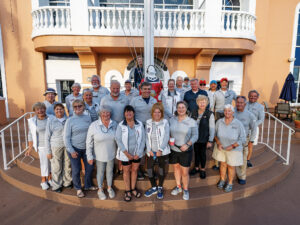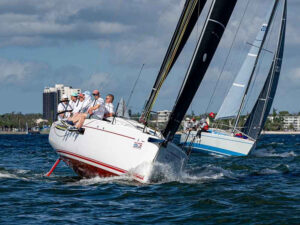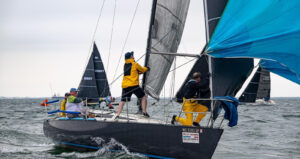The turning point in David Hardy’s Beneteau First 40.7 sailing career came when Turning Point ’s previous owner offered him a sweetheart deal. Hardy, the boat’s one-time trimmer, crew boss and tactician, is now the guy writing the checks. He took ownership of the boat back in 2012, and since then, the white-hulled Turning Point has been a perennial player atop one of the most competitive big-boat class on Lake Michigan.
The Beneteau First 40.7 fleet has been a fixture of the Chicago NOOD since the formative days of the class, and aside from more modern sail-making techniques providing some visual clue of the passage of time and technology, one would be hard pressed to see much of a difference today. The same can be said of Turning Point. Most of Hardy’s crew have been racing together for nearly 15 years.
“It’s a great boat, a true a racer/cruiser,” says Hardy, who lives nearly 100 miles west of Chicago, in South Bend, Indiana. He commutes in for the big regional events and occasional races the local beercan series. “We live on the boat in the weekends, too,” he says. “Class rules state the cushions stay onboard, as well as the doors to the head, so it makes it quite comfortable.”
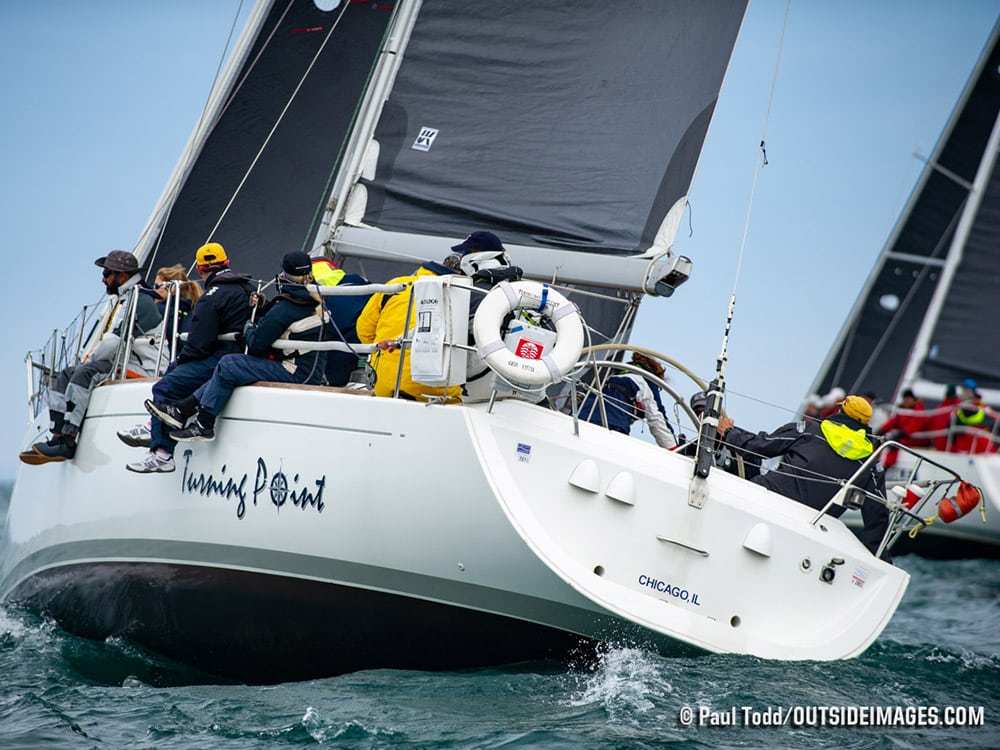
Perhaps the cushiness can make it harder to shake the crew awake after long postponements on the water, but Hardy’s team knows the drill. When it’s time to race, everyone’s on their game and the mechanics of getting the boat around the racecourse comes to them naturally. “We race with 10 or 11 people and, yes, the symmetric spinnaker is more complicated than an asymmetric,” says Hardy, “but we’ve been sailing together for a long time so we have the choreography down.”
The 40.7 is like any other “regular” sailboat, he adds, and while the symmetric spinnaker adds a small degree of complication at the front of the boat, things mostly get interesting when the wind gets beyond 20 knots. That’s when the boat can become a bit of a handful and mistakes compound instantly. “With this fleet, if you screw up, you won’t finish first very often,” says Hardy, but, still, good teams remain generous with tips and advice to others in need.
And what would be Hardy’s top-shelf advice? “There is a sweet spot and it takes an art to find that,” he says. “It’s about getting the sails balanced. Even just a minute movement, 1 to 2 inches of the traveler, is enough to change the balance of the boat and get another two-tenths of a knot. That’s usually the difference in the race.”
Turning Point ’s upwind targets hover right in around 7 knots and once he finds that sweet spot, he says, it’s easy to keep the boat in the groove: “It’s a relatively easy boat to sail given the complications of the sail plan, but it’s a great boat, it truly is.”
Getting around the corners is where the biggest gains and losses happen, and Hardy’s best advice for perfect sets is to establish a simple routine: round the mark, hoist the chute, drop the jib and be ready to jibe right away. “We’re always ready to jibe,” he says, “and when that comes to be, we usually do sheet-to-sheet jibes by one person. As long as you keep the clews forward of the headstay you won’t collapse it. It’s a team effort between the pit, the trimmer and the driver.”
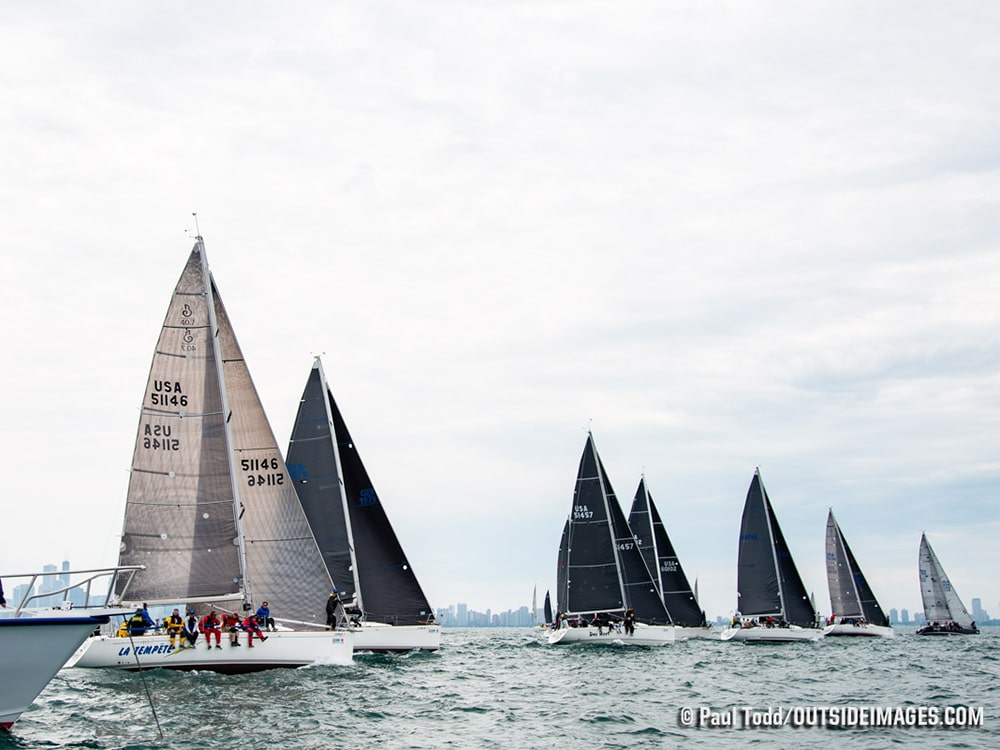
Turning Point has had its share of success, especially on Lake Michigan, but the boat doesn’t leave town very often. “ We don’t do a lot of traveling because we have one of the best fleets around right here in Chicago,” says Hardy. “It’s very competitive and we’re usually within points of each other for regatta outcomes. Last year we had over nine boats on average so that’s a good level of participation.”
The team’s schedule includes the local season-starting Colors Regatta where the fleet allows coaches onboard in order to get the teams up to speed after a long winter on the hard, the Helly Hansen NOOD Regatta is the first major, followed by the Chicago to Mackinac Race and the Verve Cup.
The NOOD Regatta, says Hardy, has delivered some of the best racing for Turning Point. “There was one regatta where 2 points separated the first three boats, and it often boils down to who beats whom in the last race. That’s very exciting and to come out on top now and again against some of these competitors is awesome.”
As about as awesome as his own personal record behind the boat’s big wheel: a pulse-spiking 16.8-knot surf. “Surfing down a wave at 16 plus is a lot of fun,” Hardy. “The boat can get on top of a wave. It just takes a bit, but it can.”


